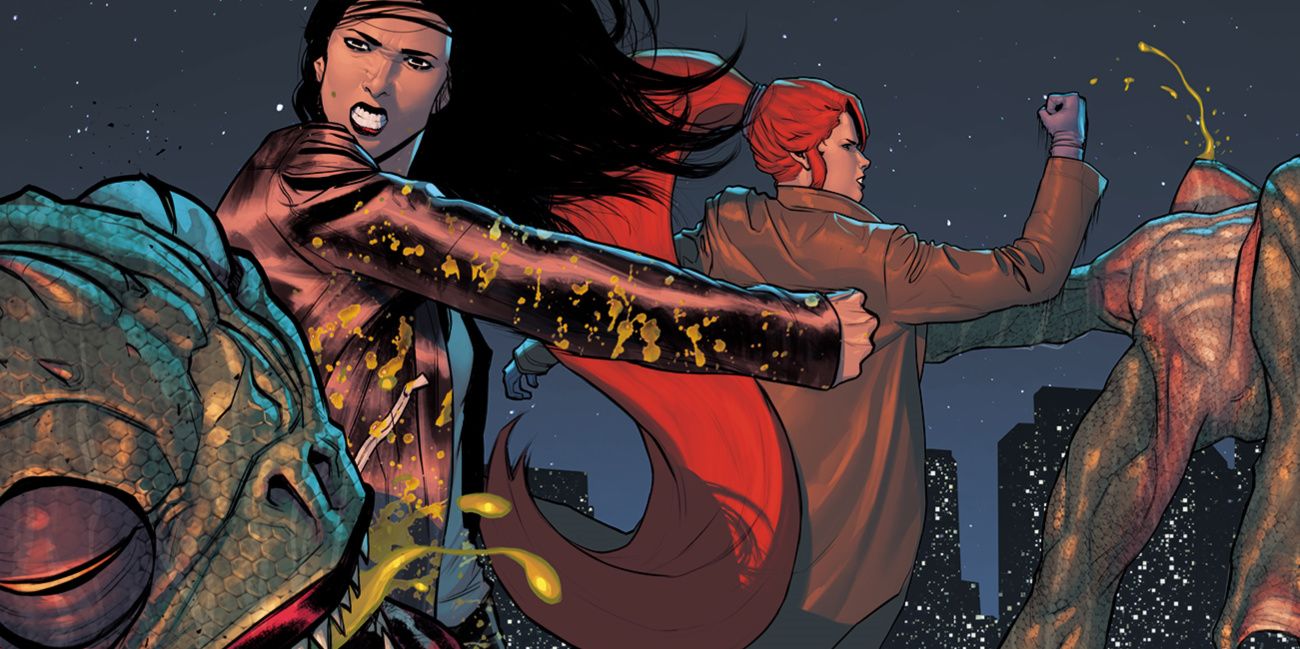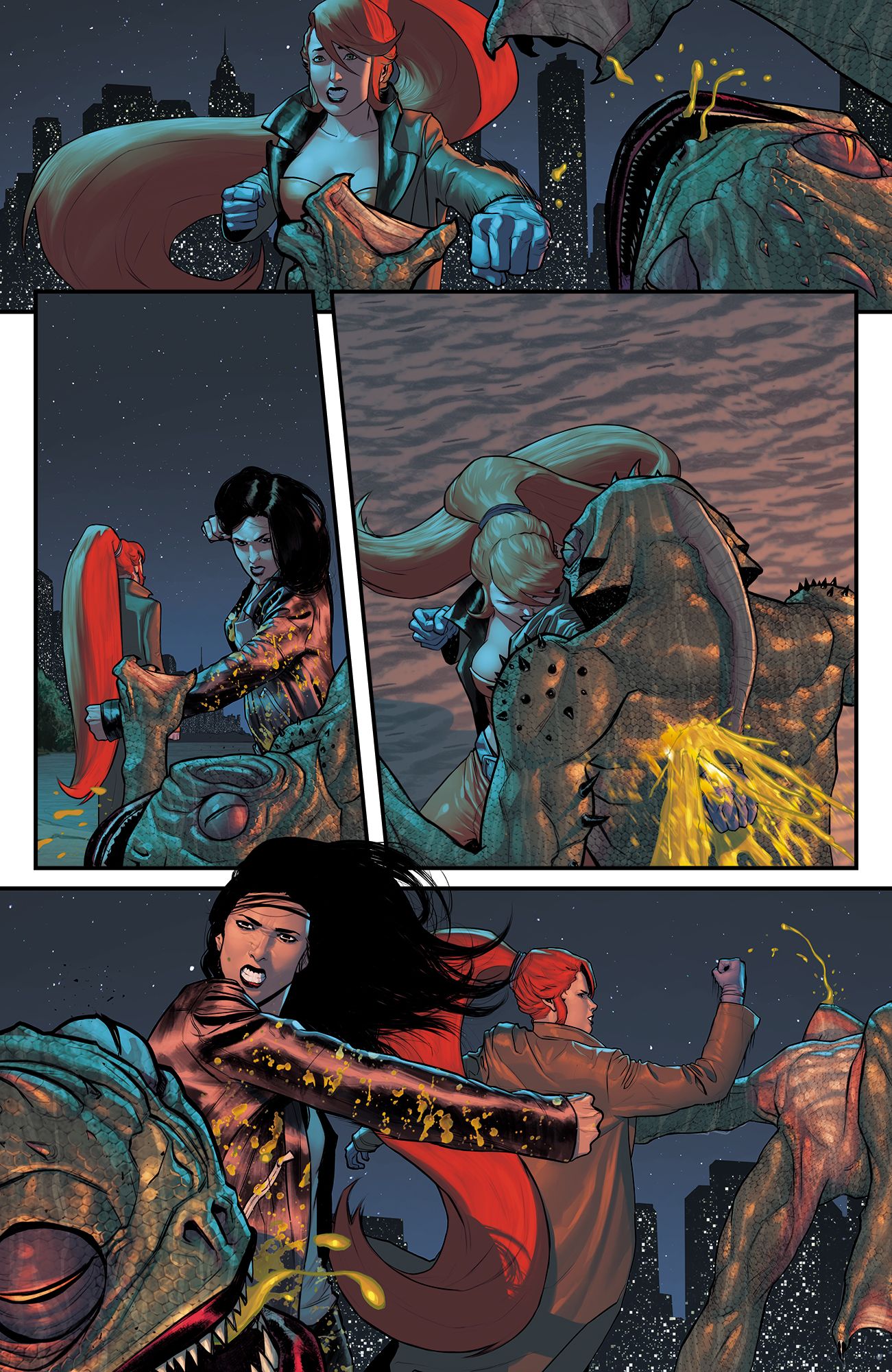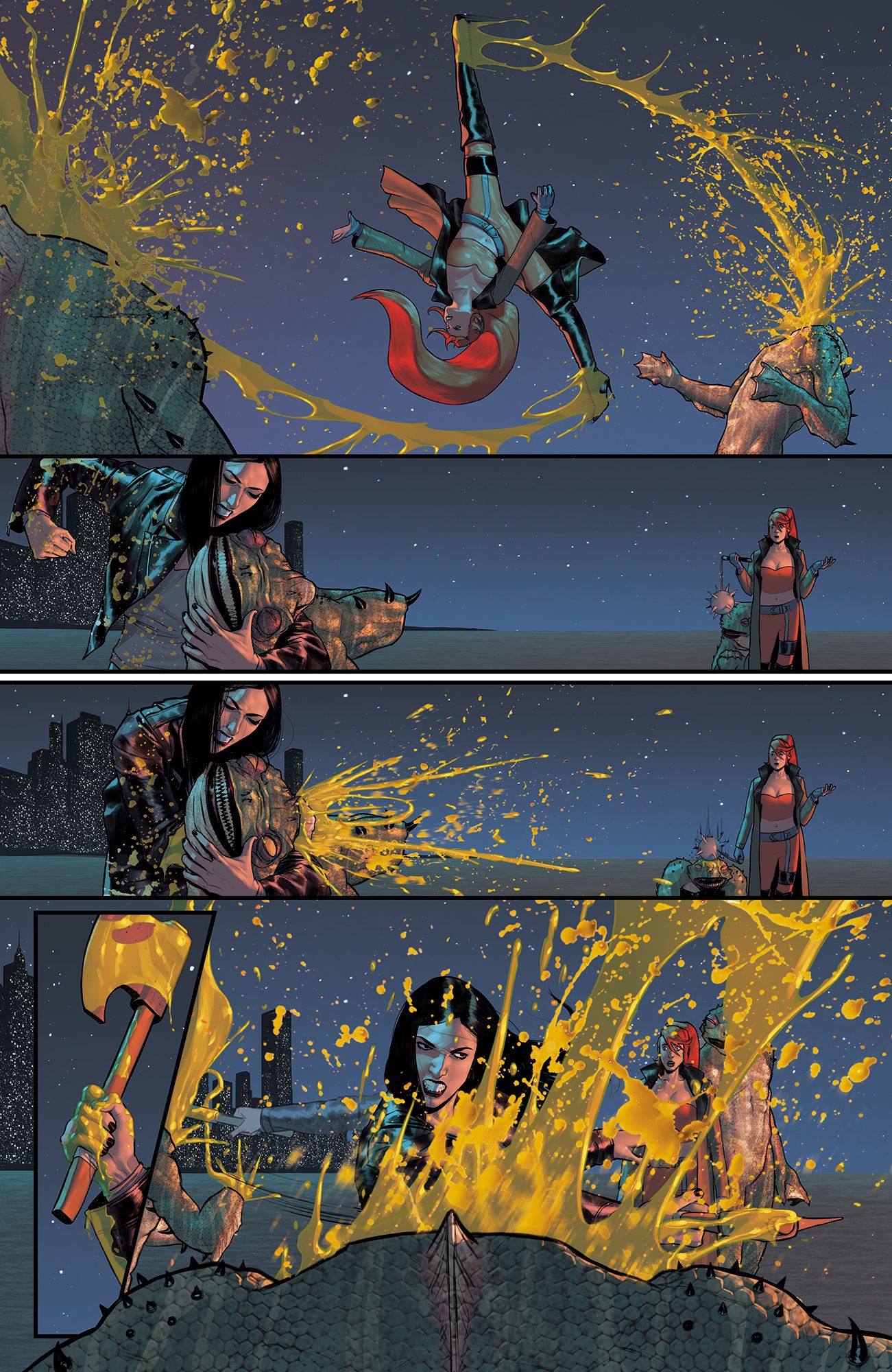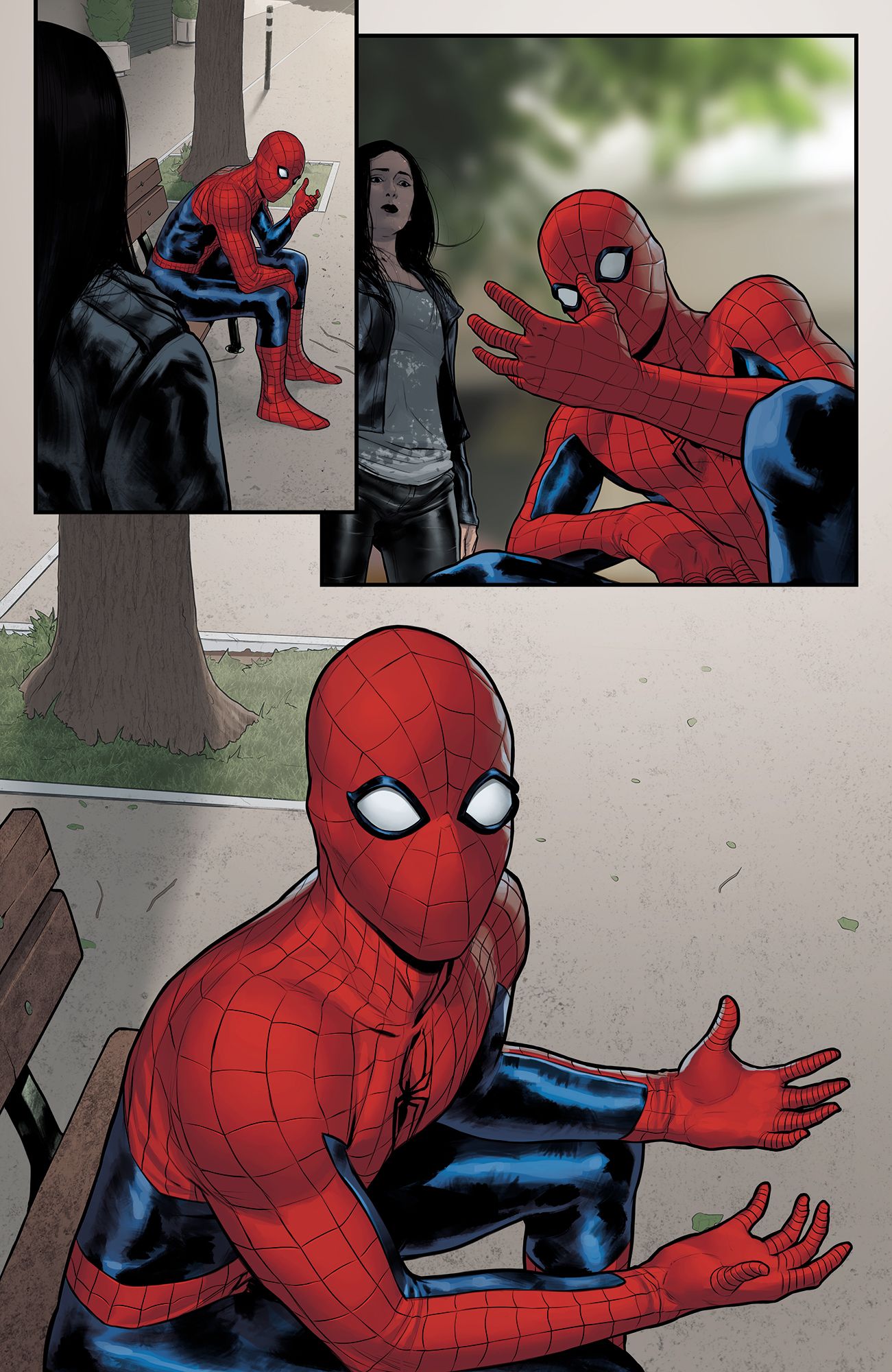In 2001, writer Brian Michael Bendis and artist Michael Gaydos introduced Marvel Comics readers to a haunted, hard drinking P.I. named Jessica Jones who used her superhuman abilities to help her crack cases. Her adventures, which blended street-level crime stories and superheroics, made her an instant fan-favorite. Under Bendis’ pen, she has changed and grown over the years. She got married to Luke Cage, embraced motherhood and became a reluctant but valuable member of incarnations of both the Avengers and (most recently) the Defenders. In recent years, she has become even more of an iconic Marvel character thanks to a critically acclaimed Netflix television adaptation in which Krysten Ritter plays the titular character.
RELATED: Bendis Asked Kelly Thompson to Take Over Jessica Jones Before He Left Marvel
When Bendis began working an exclusive contract for DC Comics, many Marvel fans started to wonder what would become of Jess? Who would take over the adventures of the Marvel Universe’s most iconic private eye? That question was answered on July 18 with the premiere of a brand-new Jessica Jones series by writer Kelly Thompson and artist Mattia de Iullis. The series is part of a new line of Marvel Digital Originals, which will allow readers to binge read arcs or “seasons” at a quicker pace than print comics.
CBR spoke with Thompson about taking over Jess’ adventures, the joy of bouncing her off characters like Luke Cage, Misty Knight and Elsa Bloodstone, and the mysteries her protagonist will tackle in the series' initial arc, “Blindspot.”
CBR: So Kelly, in Jessica Jones #1 you kicked off a brand-new era for the titular super sleuth. You’re no stranger to Jess or superhero detectives, though, having written the latest volume of Hawkeye, which Jess guest starred in. But how does it feel to be Brian Bendis’ chosen successor to write Jess? And what’s it like moving from the type of West Coast noir you did over in Hawkeye to the East Coast P.I. tales set in the heart of the Marvel Universe?
Kelly Thompson: It was absolutely thrilling and terrifying at once. It was a dream to get that call, and exciting to imagine the possibilities, and then harsh reality sets in about how high the bar is, about how you will honor the greatness that has come before while still carving your own path and making something new.
As for location and tone… I’ll forever love Kate and her L.A. neo-noir old Hollywood -- and it’s less painful to “leave it” since we’ve still got West Coast Avengers -- but it was incredibly cool to get to tackle classic hard-boiled New York City noir with Jessica.
RELATED: Kelly Thompson Clarifies Jessica Jones’ New Series’ Info
Writing Jess also means you have an opportunity to write her husband, Luke Cage, who played a supporting role in Issue #1. What’s your sense of Luke? What’s it like writing him as a supporting character?
I’m a really big Luke Cage fan, and I’m also a big fan of Jess and Luke having one of the only long-lasting marriages in comics -- they’re hot and hilarious together. It’s a magical dynamic. And I had a lot of fun exploring that in even a small capacity. Since this is Jess’s book (and Jess’s case), Luke isn’t actually in Issue #2, but he comes back in a big way for Issue #3 and will also be in the “second season.”
Page 2: [valnet-url-page page=2 paginated=0 text='Jessica Jones Is A Well-Connected Superhero, Which Means Cameos']
In Issue #1, you showed how Luke isn’t the only hero in Jessica’s life. She’s pretty well connected and can run into a number of famous Marvel icons while working on a case. At the end of the issue, she came face-to-face with a character you seemed to have a lot of fun writing over in A-Force, Elsa Bloodstone. What’s it like returning to Elsa and bouncing her off a character like Jess?
I tend to think one of the coolest things about P.I.s is that they know everyone, and everyone owes them one (or they owe everyone one). The sense of everything being connected is part of what makes that world so fascinating.
I freaking love Elsa Bloodstone so much. I’d put her in anything. But I had an uphill battle getting her into Jessica Jones because she’s not a natural fit. Which is exactly what I wanted to play with -- what does a crazy, over-the-top monster-killing character like Elsa Bloodstone, with her four feet of orange hair and stilettos, look like when you bring her into a more gritty, street-level book like Jessica Jones? Jessica and Elsa have a scene in Issue #2 that is my absolute favorite. A really unconventional “interrogation scene” that I hope folks will enjoy.
It wasn’t just superheroes that Jess ran into in Issue #1. She also came across agents of law enforcement; a familiar one in the form of Misty Knight and brand-new ones in police detectives Cellino and McGill. What inspired you to bring Misty into the book and what inspired the creation of Cellino and McGill? Do you have plans for those characters moving forward?
Misty Knight is such a great character -- you get immediate impact putting her in the story -- even just visually. She totally owns the page. And she’s got such a complex and interesting dynamic with Jessica that it’s fun to play with.
Ah, Cellino and McGill. You know, some of the other writers and I have talked about how the Marvel Universe really lacks a solid NYPD -- even just as recurring characters that show up in small roles. Reporters, we’ve got dozens of… but cops: Not so much! Cellino and McGill won’t be showing up again in this first arc, but they’ll probably show up in the second arc -- and hopefully a few other writers can find some good uses for them.
RELATED: Remember, Kelly Thompson Has Already Written Jessica Jones, And She Did It Well
In Jessica Jones #1, you introduced several mysteries into your protagonist’s life, but the most personal one had to be how she survived a gunshot wound to the head. Is this a mystery that will be solved by the end of “Blind Spot,” or is that part of the long-form story you’re telling in this book?
Yes, the “Blind Spot" arc is 100 pages -- so in the first three issues we’ll wrap up that arc and also get a sort of standalone 20-page story that also sets up the next arc. Those 20 pages are almost like a bottle episode, all taking place inside Luke and Jess’ apartment. They’re super fun and I think a little unexpected. Although, fair warning, it’s a pretty brutal cliffhanger leading to the “second season.” Eek.
Page 3: [valnet-url-page page=3 paginated=0 text='Mattia de Iulis Strikes a Balance Between Gaydos and Netflix Jessica']
Bringing to life the characters and mysteries of Jessica Jones is your collaborator, Mattia de Iulis, whose work I wasn’t familiar with before, but his style is perfect for a private detective series. The character acting and color palette are especially great in Issue #1.What’s it like working with Mattia?
Mattia is honestly too good to be true. He’s a super talent and an incredible collaborator, but he’s also just the sweetest guy, which, you know, are not always traits that go hand in hand. Although I must admit I’ve been particularly lucky when it comes to my comics partners in crime.
His take on Jessica is, in my opinion, a really excellent blend between Gaydos’ original design and the “Netflix Jessica.” It’s an awesome bridge that I think makes the best of both and I hope will be really appealing to readers old and new. But my absolute favorite element Mattia has brought to the table are his stunning colors -- a sort of high-octane neo-noir that feels at once like a sort of classic neon New York City and just a touch of futuristic Blade Runner-esque sci-fi, which is sort of just right for Jessica Jones.
What can you tell us about the remaining chapters of "Blind Spot?" It feels like this initial arc is about both the hunt for a serial killer and what’s happening with Jess.
I think that any good P.I. case always ties to the detective’s life a little bit -- or at least some of their personal issues -- and Dia’s case is definitely cutting a little close the bone for Jess, both in Jess’s own issues and also in her feelings of guilt over initially failing Dia.
We’ve got a few more guest stars and cameos coming up -- Mary Jane Watson and Spider-Man. A bit more of Doctor Strange (and his snakes!), Misty and, of course, a very big Elsa scene in the next issue. But I also think we’ve got some genuine curve balls to throw in how the case develops and is resolved.
"Blind Spot" and subsequent issue of Jessica Jones are different from other Marvel comics in that they’re in a digital format and readers are getting two issues at one time instead of one. Has that impacted the way you write this book?
Yes and no. Because we’re still breaking the book into 20-page chapters, it doesn’t feel that different, but it is nice to be able to give readers a larger slice of the pie each time. There’s honestly something appealing about ignoring the “chapter break” altogether, but for now we’re sticking with chapter breaks.
RELATED: Jessica Jones: Krysten Ritter to Make Directorial Debut on Season 3 Episode
Finally, I understand that the accelerated publishing schedule of Marvel Digital Originals means that there might be some time between the end of “Blind Spot” and the start of the second arc of Jessica Jones. Is that correct?
Yes, I think Marvel is aiming for a more “bingeable” way to read this series that reflects some changes we’re seeing in how people consume media. Instead of watching a show over a year we binge it in a weekend, and for people who are used to that method of consumption, a 20-page comic book feels pretty short… pretty light. So this approach of more content at once and faster, followed by a break between “seasons” seems like a pretty natural avenue to explore. And using solo characters like Jessica Jones, who have a great and devoted following but maybe not the massive sales numbers of big team books, is pretty smart as far as I’m concerned.




